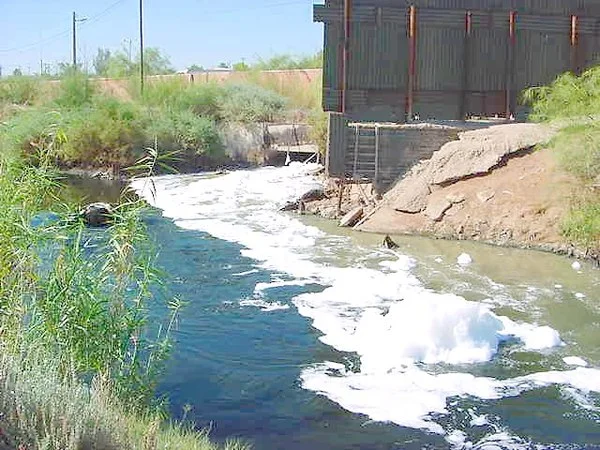Mass. companies continue to produce major water pollution
Via ecoRI News (ecori.org)
Industrial facilities dumped excessive pollution into Massachusetts waterways 124 times over 21 months, according to a new report by Environment Massachusetts.
“All of Massachusetts’s rivers and streams should be clean for swimming, drinking water, and wildlife,” said Ben Hellerstein, state director for Environment Massachusetts. “But industrial polluters are still dumping chemicals that threaten our health and environment, and no one is holding them accountable."
The report, "Troubled Waters: Industrial Pollution Still Threatens American Waterways,'' comes as the Trump administration tries to weaken clean water protections and slash enforcement funding for the Environmental Protection Agency (EPA).
In reviewing Clean Water Act compliance data from January 2016 through September 2017, the Environment Massachusetts Research & Policy Center and Frontier Group found that major industrial facilities are regularly dumping pollution beyond legal limits set to protect human health and the environment, in Massachusetts and across the country.
“In thousands of instances, industrial facilities have released more pollution than they were permitted to, but that is just the tip of the iceberg,” said Elizabeth Berg, a policy associate with Frontier Group and one of the authors of the report. “Many facilities have further violated the Clean Water Act by failing inspections, or filing incomplete reports. Our waterways simply need better protection.”
For example, the report found that the Texas Instruments facility in Attleboro, Mass., poured pollutants in excess of its permit limits 13 times into Coopers Pond, including one violation more than 500 percent beyond its permit limits. Wyman-Gordon Co. in North Grafton also exceeded its permit 13 times.
The 10 states with the most exceedances reported by major industrial facilities. (Environment Massachusetts)
"Our rivers and streams are where we go fishing, swimming and boating ... as well as the source of drinking water for many communities,” said Gabby Queenan, policy director for the Massachusetts Rivers Alliance. “At the local, state and federal level, we must do a better job of protecting these essential public resources.”
Over that 21-month period from January 2016 to September 2017, major U.S. industrial facilities released pollution that exceeded the levels allowed under their Clean Water Act permits 8,148 times, according to the 70-page report.
The report also found that during about one-third of exceedances — more than 2,600 times in total — pollutants were being added to waters that were already too polluted for uses such as recreation, fishing or drinking water, hindering efforts to restore them.
Three-quarters of facilities that exceeded their discharge permit limits did so more than once. These polluters seldom faced fines or penalties. Each year from 2011 to 2017, an average of 27,849 facilities were non-compliant across the country, while an average of 13,076, less than half, faced any EPA or state enforcement action.
